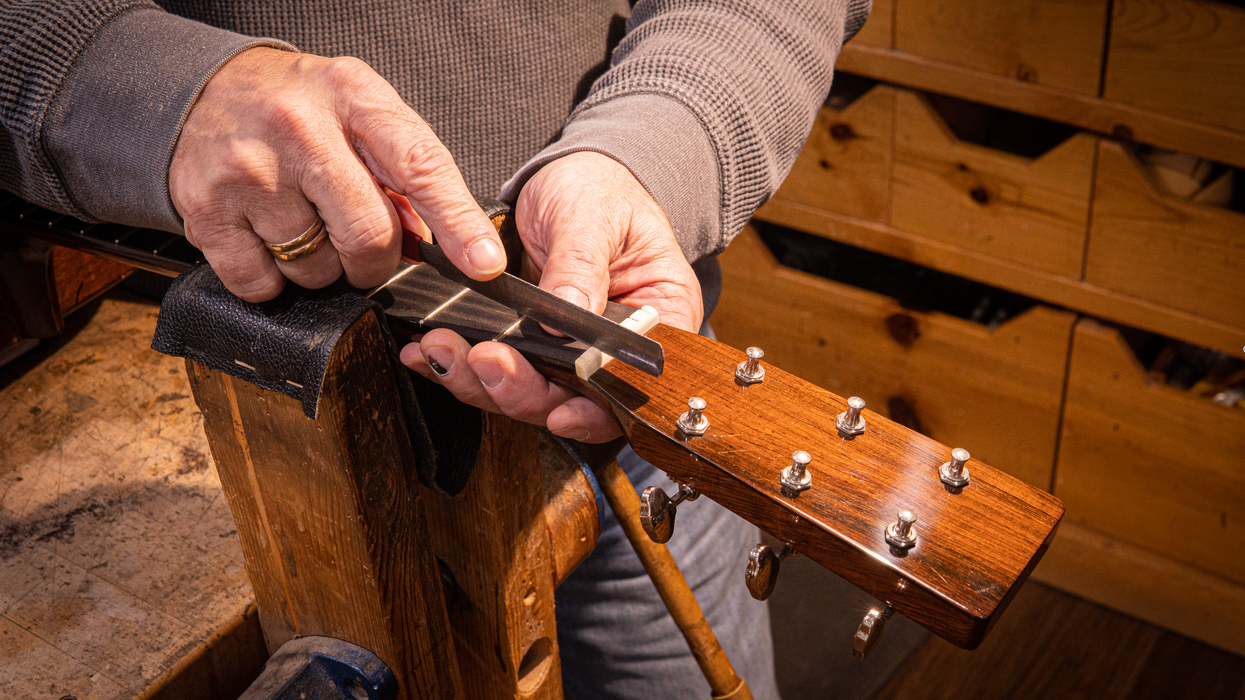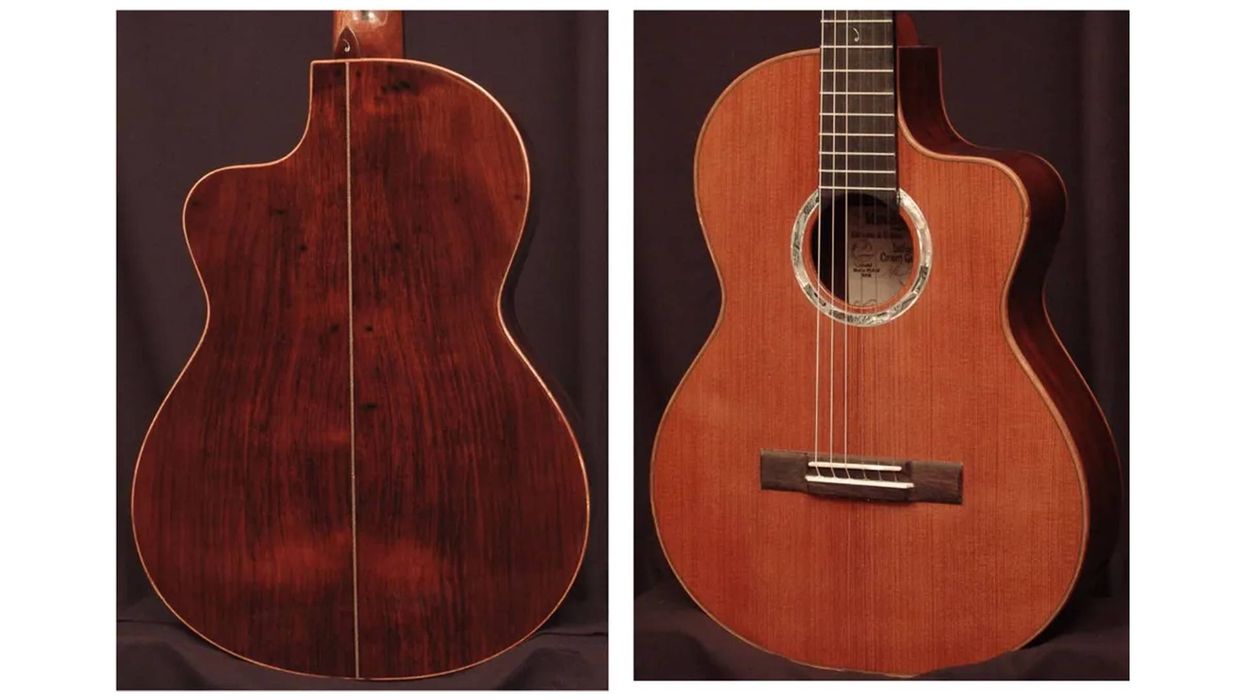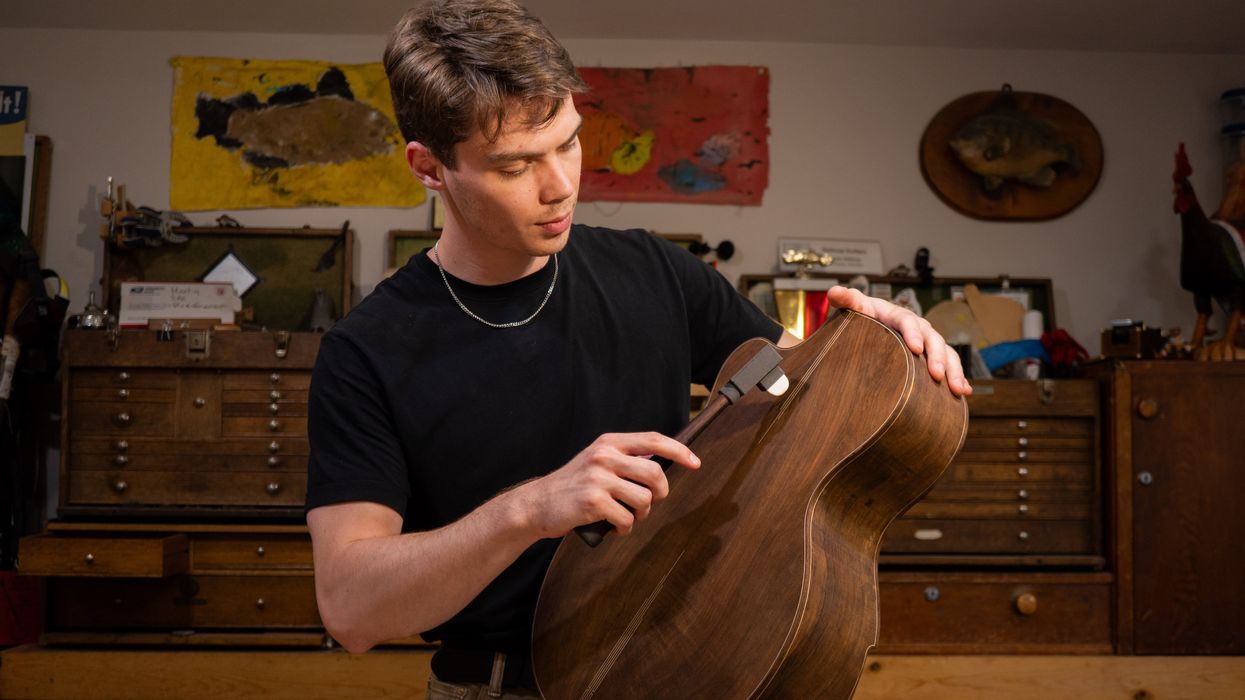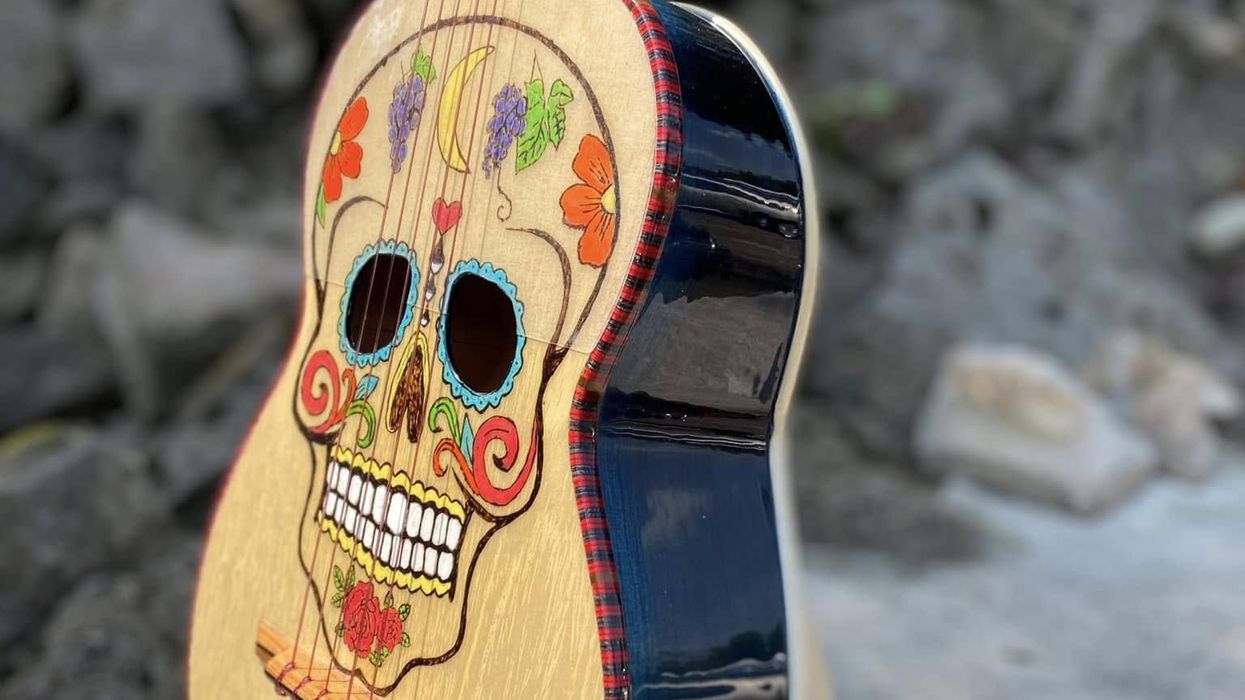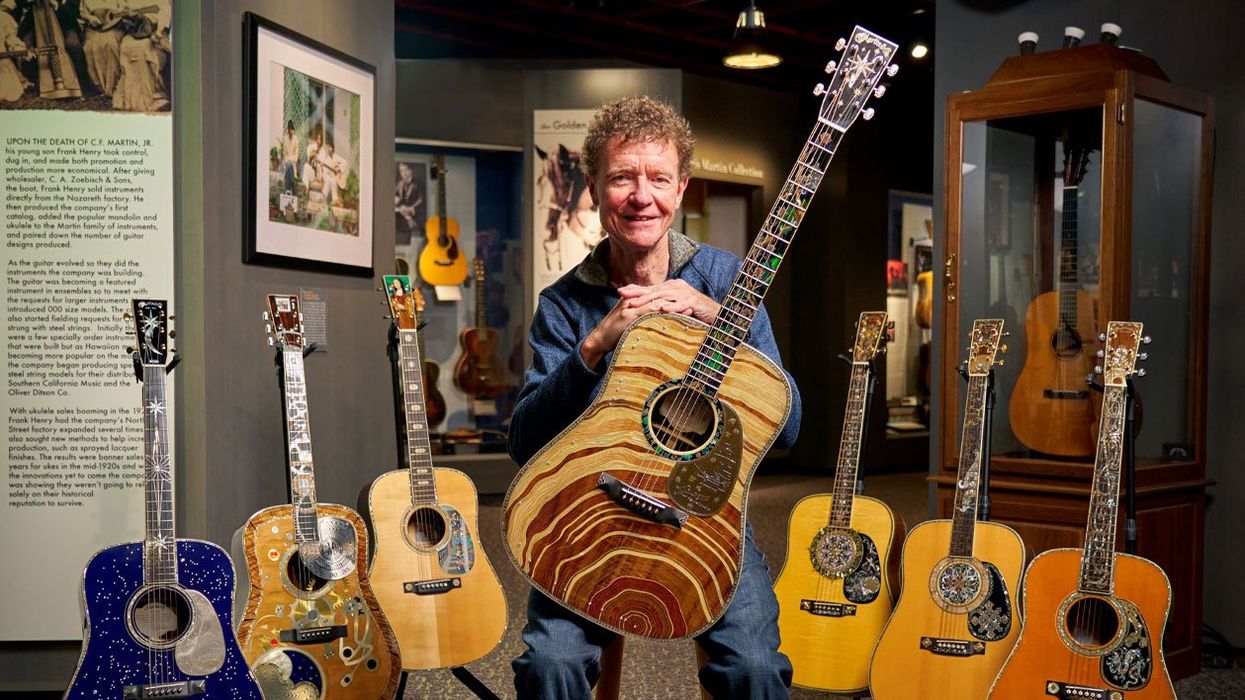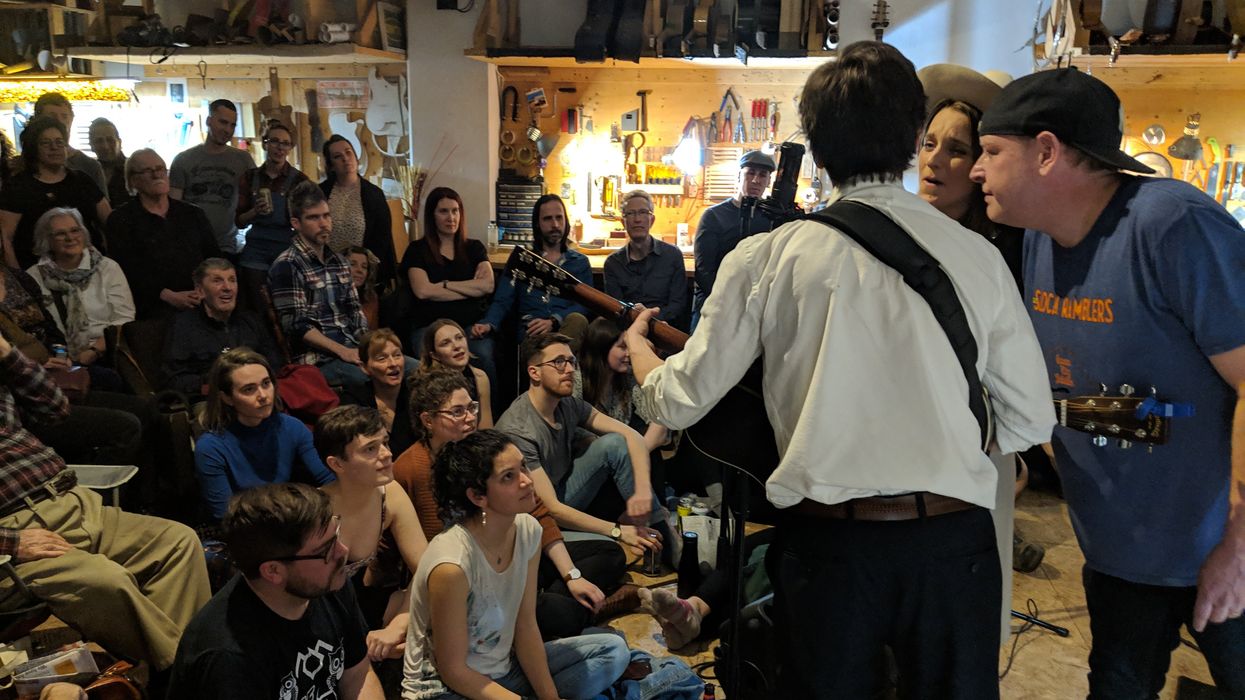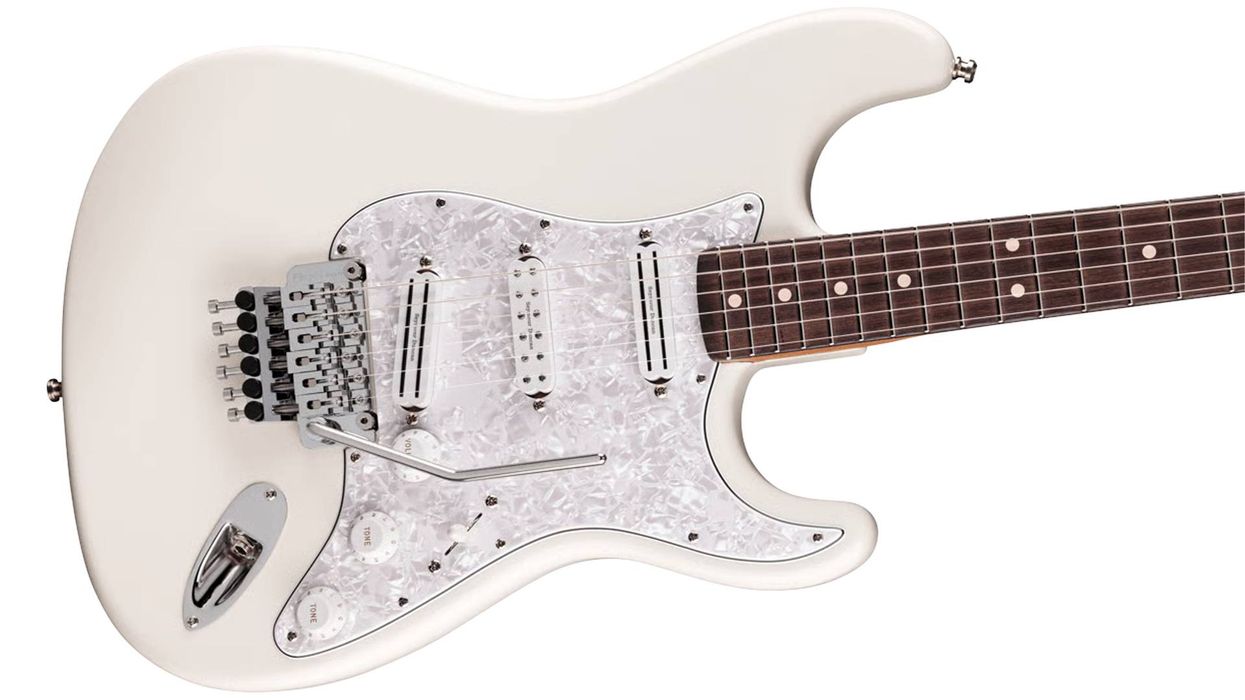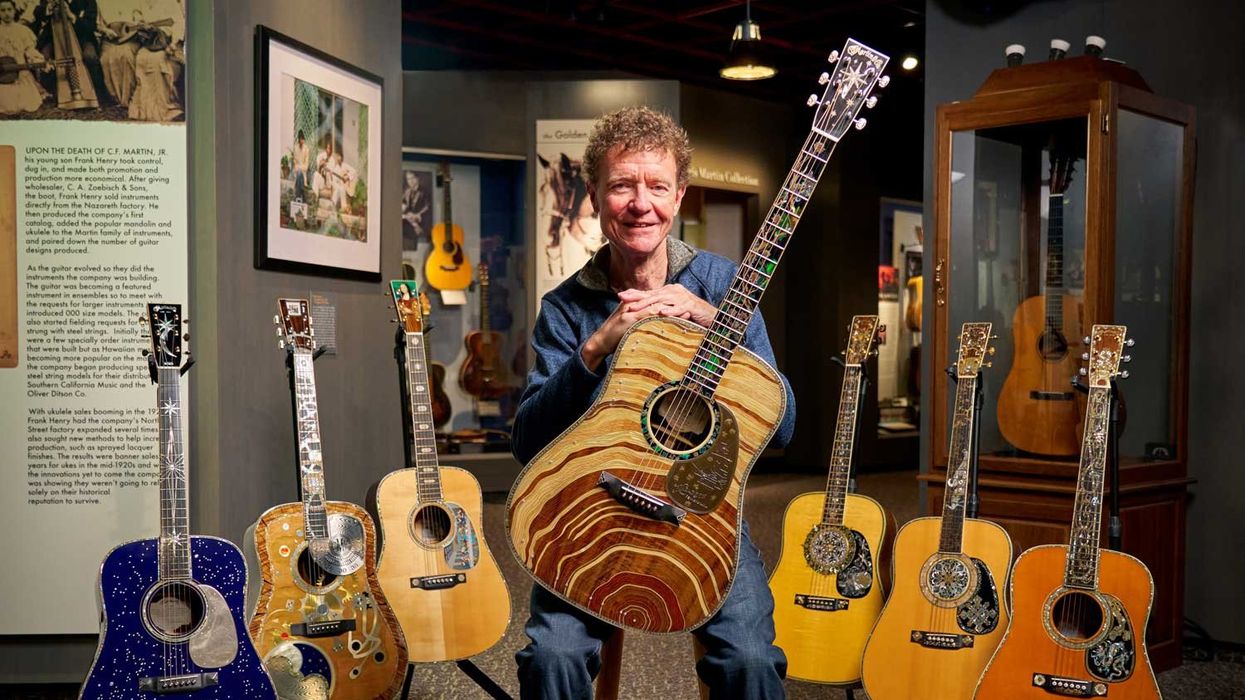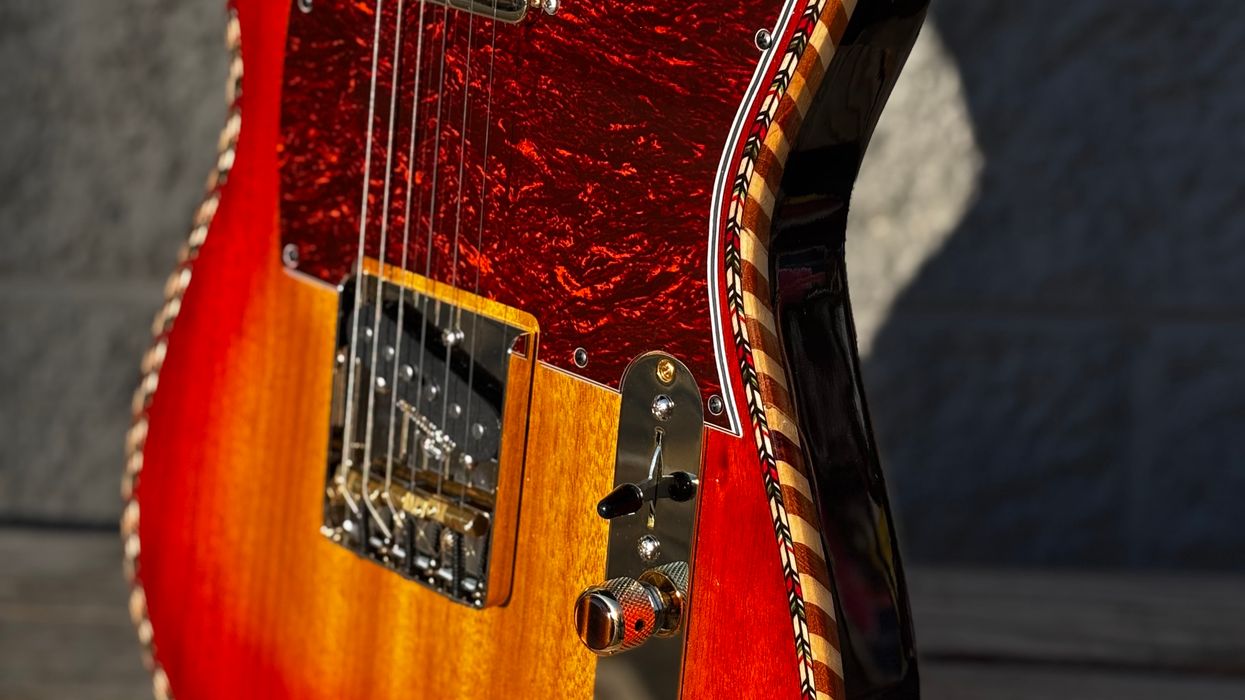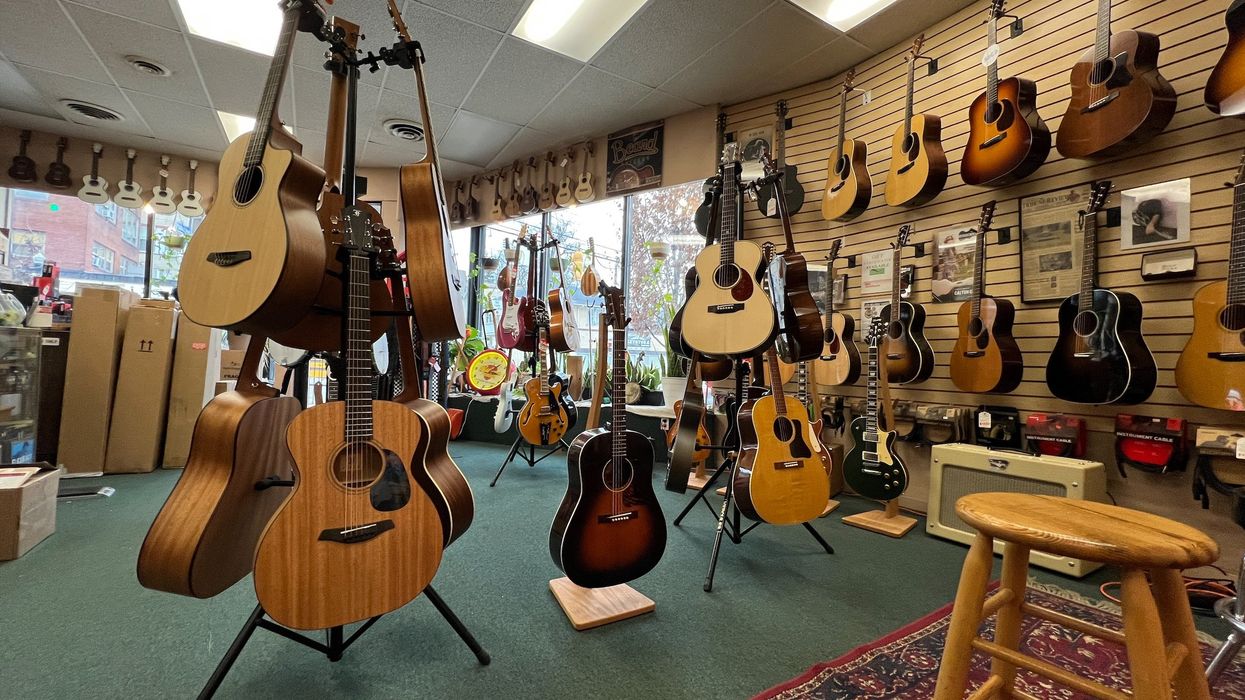In my early days, all the guitars I played (which all happened to be pre-1950s) used bone nuts and saddles. I took this for granted, and so did my musician friends. With the exception of the ebony nuts on some turn-of-the-century parlors and the occasional use of ivory, the use of bone was a simple fact of our guitar playing lives, and alternative materials were simply uncommon to us.
It wasn’t until I started hanging around Quinn’s Music in the neighboring town of Big Rapids, Michigan, that I started seeing guitars with alternative materials for nuts and saddles, such as the plastic used on Kays and Silvertones. Unfortunately, these materials lacked the firmness of bone, and ultimately did not produce the clear tone I’d become so accustomed to. This is also when I started to encounter acoustic guitars with adjustable saddles, which were mostly mid-’60s Gibsons. Some utilized wood for the adjustable saddles, while others used porcelain, and both materials posed both acceptable but not-so-great alternatives to bone.
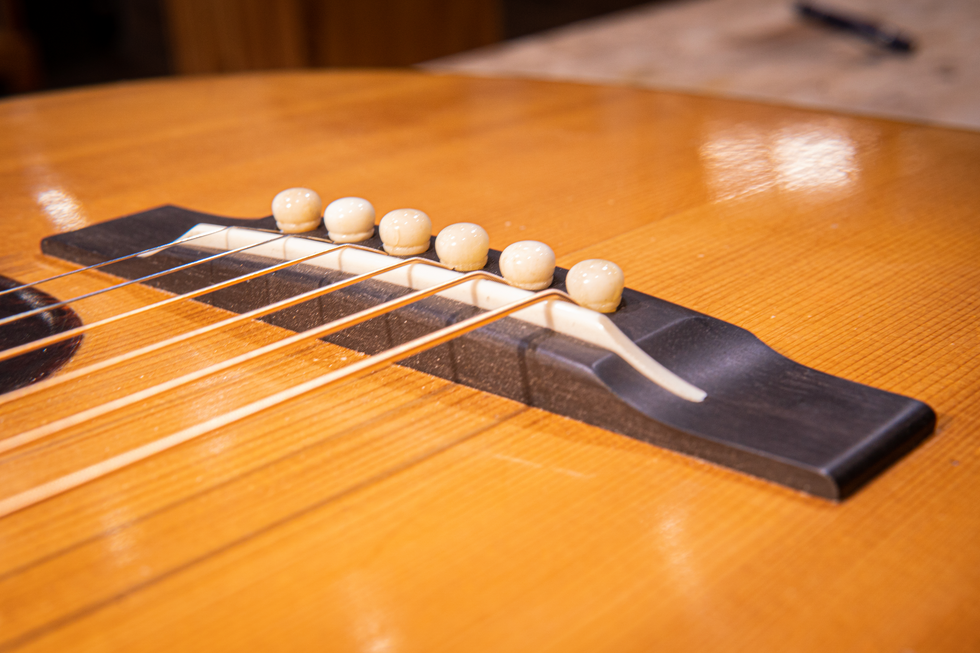
A vintage-style “through saddle” on a 1930 Martin OM-18. When made correctly, the saddle height and string break will greatly enhance the overall tone of the instrument.
Over the years, I’ve seen many materials that claimed to be better than bone. But better at what? Because other than pearl, nothing beats bone for tone. Even though there are other compelling material propositions, such as brass and graphite, they all have flaws. Brass, which was popularized in the ’70s, claims to add sustain to notes, but that possible advantage has been debated, and brass is not recommended to be used as a saddle since its weight can potentially have a negative impact on soundboard resonance. Graphite is commonly used by electric players and can help maintain tuning with vibrato use and heavy bending, but it’s far too soft to offer premium tone on an acoustic instrument.
In 1976, I bought a 1969 Martin D-28. After playing it for a bit, I noticed it was lacking in high-end and clarity compared to other guitars I owned, such as my Gibson B-25. I unstrung the guitar, removed the saddle, and was surprised to discover the saddle was pliable and soft, and the nut was made from this same soft material. I took it to my local guitar repairman, Dan Erlewine, who did a great job fabricating and installing a new nut and saddle made from bone. The guitar’s overall tone improved, and the guitar came to life. Once I started repairing guitars, I routinely made and installed bone nuts and saddles to replace plastic or composite materials. As I began specializing in acoustics, I also did plenty of neck sets and fret jobs, which included a bone nut and saddle replacement to round out the repair.
This experience helped me to realize that the most impactful and minimal change you can make to influence tone is a bone nut and saddle upgrade.
This experience helped me to realize that the most impactful and minimal change you can make to influence tone is a bone nut and saddle upgrade. In fact, after finishing the initial evaluation on a customer’s guitar, I would let them know that. However, if a customer is tight for cash, I always told them to “focus on the saddle, as it influences every note on the guitar.” On the other hand, the nut only dictates the tone of the six open notes. Of course, those are pretty darn important notes!
So, to me, a bone nut and saddle upgrade is a fairly low-cost improvement to the overall tone and responsiveness of your guitar. Additionally, a well-made bone nut and saddle will outlast a plastic version tenfold. Both can easily be installed by a qualified technician, and along with a proper setup, it’s still my recommendation as the biggest “bang for your buck” to improve your guitar’s tone and playability.
